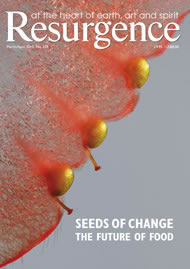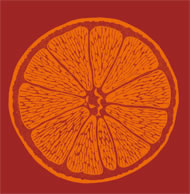An estimated 40% of global greenhouse-gas emissions are the result of the way we keep our highly inefficient industrial food system running, and the global nitrogen and phosphorus cycle, fed by agricultural emissions, is threatening vital ecosystem functions on an unprecedented global scale. In fact, the present loss of biodiversity now exceeds the levels of the great dinosaur extinction.
A recent article written by fifteen of the most eminent scientists and published in Nature magazine has proposed boundaries for nine of the Earth-system processes deemed vital for maintaining the relatively stable conditions of our present geological era. And, with the exception of stratospheric ozone depletion, agriculture is the most significant key driver of potential disruption for all of these Earth systems, according to this group of scientists.
The fact is that three of these nine boundaries – climate change, biodiversity loss and the nitrogen/phosphorus cycle – have already exceeded the recommended limits and so it was high time indeed for a concerted scientific effort to comprehensively address these complex and interrelated issues and to seek the maximum achievable consensus among all major stakeholders and players. That effort, which has now been in the public domain for a year, is the International Assessment of Agricultural Knowledge, Science and Technology for Development (IAASTD).
The 2,000-page assessment, hailed as the most thorough compilation of what we currently know about the global food and environmental crises, was jointly initiated by the World Bank and the United Nations. More than 500 scientists and experts from around the world spent some five years writing it, and since being made public it has been endorsed by fifty-eight different governments around the globe. Yet, mention the name IAASTD to any of the prominent decision makers at the world food summits (and similar gatherings), and the most likely collective response will be: “What IAASTD?” The reason that this might be so is that the key message of this report is the unpopular notion that business as usual is not an option.
The IAASTD states: “The formal AKST [agricultural knowledge, science and technology] system is not well equipped to promote the transition toward sustainability. Current ways of organizing technology generation and diffusion will be increasingly inadequate to address emerging environmental challenges, the multifunctionality of agriculture, the loss of biodiversity, and climate change.” These are tough verdicts for the political, scientific and corporate community to swallow; yet this is just the starter.
For the first time, a United Nations document introduces the concept of Vía Campesina – the global small farmers’ organisation – as a more appropriate approach than mere food security, when it says: “Food sovereignty is defined as the right of peoples and sovereign states to democratically determine their own agricultural and food policies.” This approach has major implications for the way we see the future of food and farming. It relates to the local level of farmers and consumers, as well as the international level, especially the World Trade Organization (WTO) and bilateral trade agreements. It no longer asks “How can we feed 9 billion people?” but “How can 9 billion people feed themselves?” – which challenges the dominance of transnational corporations, as well as our concept of global democracy. Embracing this pro-active, bottom-up approach in a scientific consensus document, and having it approved by the governments of China, India, Brazil, the Philippines, France and the United Kingdom, to name but a few, may not be a revolution, but it comes close.
For too long, looking at food and agriculture has been a one-sided effort to increase yields, improve efficiency and serve an ever-growing global market for agricultural commodities. But agriculture provides much more than food, and its environmental services are now probably as important for the survival of humankind. Agriculture also produces culture – landscapes, identities, homes, communities and spiritual environments. Only when we consider all these “products”, and value them appropriately, will we be able to determine truly sustainable pathways of change.
This certainly is seen as common sense among a great majority of scholars and activists in the field. However, when trying to conceptualise such a holistic view of agricultural activities and knowledge, scientific wit and competence are at a loss. Continuous specialisation seems to stand in the way of “making ends meet” and “thinking it all together”. Health, productivity, economic viability, CO2, soil, water and biodiversity impacts of agriculture are currently being measured in different frames with little interconnectedness. Institutional frameworks are mirroring these disconnects, experts seem unable to even talk to each other in a common language, and farmers themselves, who for generations have been exercising this somewhat inevitable game of comparing apples and oranges, are not taken seriously as significant partners.
The IAASTD, a collaborative effort involving a group of scientists and experts from a wide diversity of backgrounds, has not produced ingenious solutions but it has presented the key questions that really matter at both a local and a practical level and in a most refreshing and sobering way. Its critique and analysis of the present state of scientific helplessness and academic parochialism are among the most ground-breaking sections of the entire document. It includes an honest account of the fundamental failures of the “Transfer of Technology” paradigm of agricultural development, and an inspiring plea for modern, place- and problem-based participatory innovation concepts.
If environmental as well as social sustainability services of agriculture are as important for the planet’s survival as its food productivity, a new concept of subsidies and global burden-sharing cannot be dismissed. Rewarding small farmers disadvantaged by global trade, technology control and traditional international power play, and the most challenged by hunger, climate change and the overexploitation of natural resources is the only conceivable concept of development and climate adaptation.
Shifting major parts of the total US$350 billion in annual agricultural subsidies from national industries to the rural poor and small farmers in developing countries is probably still beyond the intellectual (and certainly beyond the political) horizon of decision makers in industrialised countries. To understand that this is actually the best investment in our shared future, as well as understanding that there is a debt to global equity, which must be paid back in order to get a climate deal and gain the trust required for its implementation, still does not resound with even the more progressive actors on the national and international stages of climate negotiations and development.
These are a few reasons why the conclusions and recommendations of the IAASTD are still met with ignorance or, at best, denial, even within many of the institutions and governments that have endorsed its findings. But this is not to say that its impact cannot be felt. When the scientists – who were all jointly selected by the representatives of agribusiness, NGOs and the World Bank – started their discussions in 2004, small-scale and subsistence farmers were still perceived as remnants from the past by many of the participating agronomic, economic, technology and population experts. No longer so when, just four years later, the IAASTD message that the future of food, agriculture, development and sustainability depends upon small-scale farmers was adopted unanimously.
Bill Gates, co-founder and now non-executive chairman of Microsoft, has become one of the most powerful players in the development arena. Speaking at the World Food Prize award ceremony in Des Moines, Iowa last year, he told his audience: “The next Green Revolution has to be greener than the first. It must be guided by small-holder farmers, adapted to local circumstances, and sustainable for the economy and the environment.” Announcing an additional US$120 million in grants to be added to the US$1.4 billion already committed to agriculture by his charity, he added: “Helping the poorest small-holder farmers grow more crops and get them to market is the world’s single most powerful lever for reducing hunger and poverty,”
Gates is only repeating what the World Bank, the FAO and even the declaration of heads of states gathering for the third global Food Summit in Rome have now accepted as inevitable: find it beautiful or not, small is our only hope.
The man in charge of the Gates Foundation’s agricultural programme had participated in the first discussions about the IAASTD. At this time, Robert Horsch was still a vice president of Monsanto. He left the IAASTD at an early stage, probably quite rightly anticipating the conclusions that led Syngenta, Monsanto’s arch-rival on the global GMO and pesticide market, to leave the IAASTD at the last minute, thereby avoiding having to sign what their own scientists could no longer deny: that small-scale family farming is the best available concept to mitigate food-induced climate-gas emissions, to adapt to climate change, to fight malnutrition and to guarantee the multifunctional, environmental and social services of agriculture under the harsh conditions of exhausted natural resources, biodiversity and fresh-water availability.
Low-input farming, replacing fossil fuels, chemical inputs and a perverted global system of commodity trade and production, is the best hope we have of not exceeding the limits of this planet and still feeding all its people. By using the only resources available in abundance over the coming decades, including solar energy and human labour, ingenuity and collaboration, investment in small farmers is not merely a cheap charity add-on, but the only real alternative, and it will bring the added benefit of healing the wounds inflicted by last century’s industrial-scale farming.







